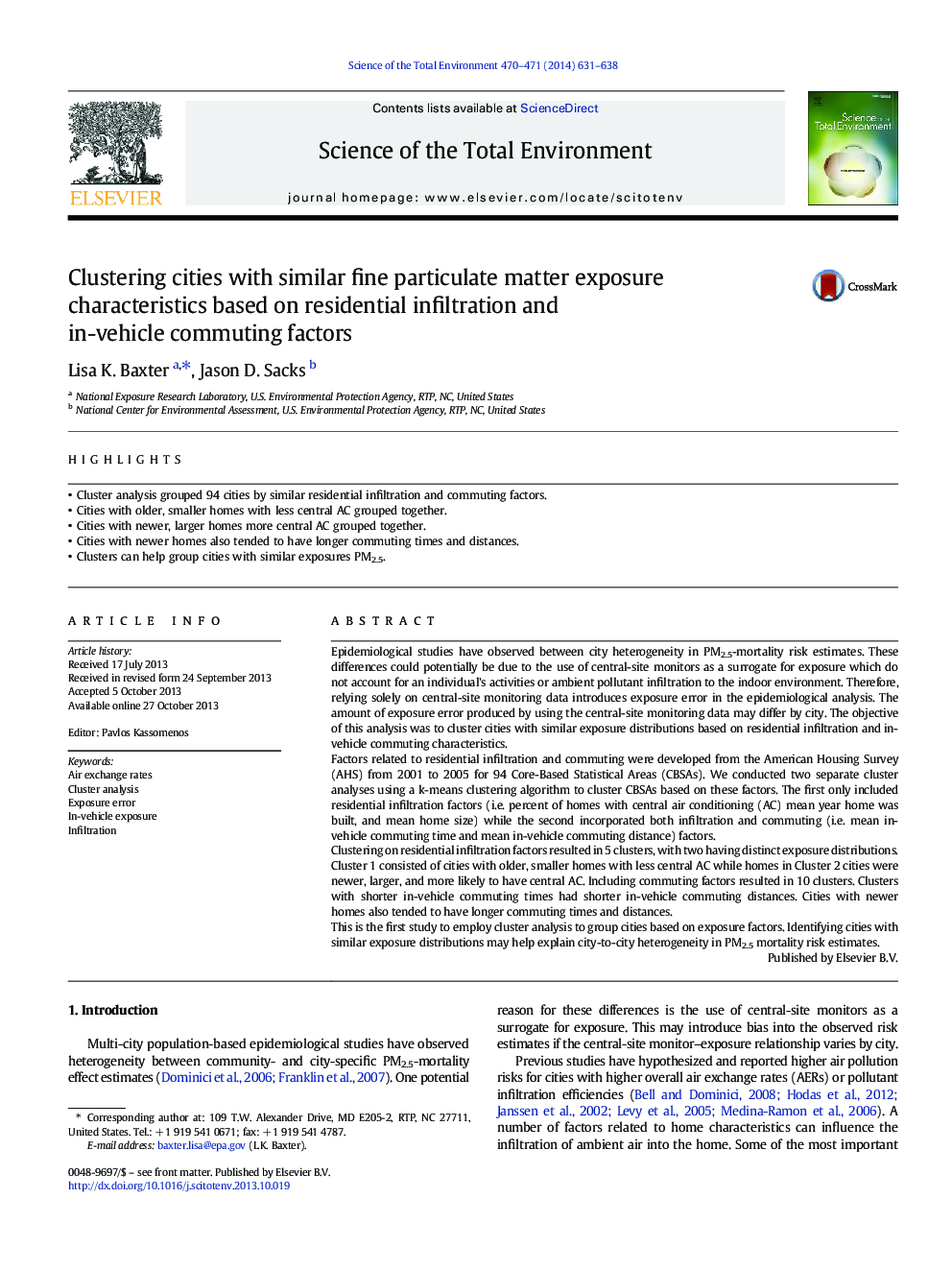| کد مقاله | کد نشریه | سال انتشار | مقاله انگلیسی | نسخه تمام متن |
|---|---|---|---|---|
| 6331454 | 1619793 | 2014 | 8 صفحه PDF | دانلود رایگان |
- Cluster analysis grouped 94 cities by similar residential infiltration and commuting factors.
- Cities with older, smaller homes with less central AC grouped together.
- Cities with newer, larger homes more central AC grouped together.
- Cities with newer homes also tended to have longer commuting times and distances.
- Clusters can help group cities with similar exposures PM2.5.
Epidemiological studies have observed between city heterogeneity in PM2.5-mortality risk estimates. These differences could potentially be due to the use of central-site monitors as a surrogate for exposure which do not account for an individual's activities or ambient pollutant infiltration to the indoor environment. Therefore, relying solely on central-site monitoring data introduces exposure error in the epidemiological analysis. The amount of exposure error produced by using the central-site monitoring data may differ by city. The objective of this analysis was to cluster cities with similar exposure distributions based on residential infiltration and in-vehicle commuting characteristics.Factors related to residential infiltration and commuting were developed from the American Housing Survey (AHS) from 2001 to 2005 for 94 Core-Based Statistical Areas (CBSAs). We conducted two separate cluster analyses using a k-means clustering algorithm to cluster CBSAs based on these factors. The first only included residential infiltration factors (i.e. percent of homes with central air conditioning (AC) mean year home was built, and mean home size) while the second incorporated both infiltration and commuting (i.e. mean in-vehicle commuting time and mean in-vehicle commuting distance) factors.Clustering on residential infiltration factors resulted in 5 clusters, with two having distinct exposure distributions. Cluster 1 consisted of cities with older, smaller homes with less central AC while homes in Cluster 2 cities were newer, larger, and more likely to have central AC. Including commuting factors resulted in 10 clusters. Clusters with shorter in-vehicle commuting times had shorter in-vehicle commuting distances. Cities with newer homes also tended to have longer commuting times and distances.This is the first study to employ cluster analysis to group cities based on exposure factors. Identifying cities with similar exposure distributions may help explain city-to-city heterogeneity in PM2.5 mortality risk estimates.
Journal: Science of The Total Environment - Volumes 470â471, 1 February 2014, Pages 631-638
